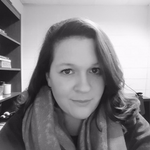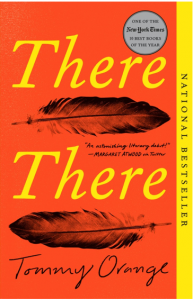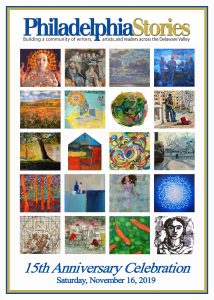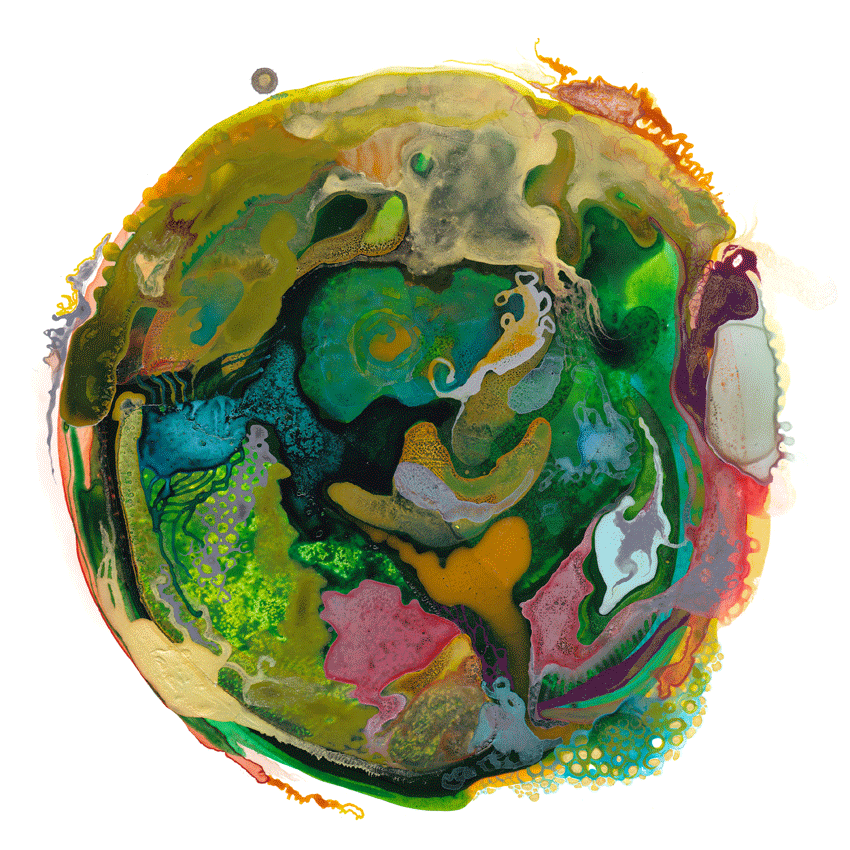Letter from the Poetry Editor:  Courtney Bambrick
Courtney Bambrick
Each year, Philadelphia Stories celebrates the memory of poet Sandy Crimmins whose poem “Spring” appeared in our first issue. Sandy served on the Philadelphia Stories poetry board until 2007, and her influence on the magazine has been felt ever since. We use the prize named for her to celebrate risk and innovation in poetry. This year’s Sandy Crimmins National Prize in Poetry was judged by poet Iain Haley Pollock, author of Ghost, like a Place and Spit Back a Boy. Many of the poems we sent him raise important questions and give voice to unsettled feelings. Pollock says that, “[W]e live in an exciting, efflorescent time in the history of American poetry.” We can see that flowering in the poems listed below. Pollock continues:
These poems explore diverse subjects—the lonely offices of grief, the deterioration of our public discourse, the cruel legacies of our national history, the triumphant possibilities of migration, the wistful complications of eros, and the sustaining inheritances of family. But no matter the subject the unflinching clarity of each poet’s vision and the precision of each poet’s images tap into a deep well of emotion. The pleasures of these poems are not easy but lie in knowing that out there other humans wrestle to make sense of the intractable world around them and perhaps even find within it cause for hard-won celebration.
The winner of this year’s Sandy Crimmins National Prize in Poetry winds itself in the conflicting but complementary threads of care and fear. Vigilance is exhausting but necessary, “Milk Sickness: A Mother Worries as Her Children Sleep” by Kari Ann Ebert seems to tell us. About the winning poem, Pollock writes:
We become “milk sick” when we drink milk from a cow that has grazed on poisonous plants. In “Milk Sickness: A Mother Worries as Her Children Sleep,” Kari Ann Ebert makes this condition a metaphor for maternal apprehension. The poison here is ophidian as snakes menace a pail of milk, “swim in sacrifice,” in that part of the body a mother gives up that her children might live. As with many parents, having children has expanded the speaker’s capacity for love and also her capacity for fear. As the speaker’s dread deepens, Ebert overlays a deft sonic network, heightening the poem’s emotions. In the end, the snakes’ movement and attendant noise become, as does fear, so encompassing that relief from them seems manufactured or illicit—“like stolen butter.” All in all, with an expert command of sound and image, Ebert captures how fear, especially maternal fear, acts on us and threatens to overwhelm us in the “opaque” hours of our lives.
Philadelphia Stories thanks Joe Sullivan for his support of this contest and his enduring friendship with Philadelphia Stories. We also thank Nicole Mancuso, contest coordinator and assistant poetry editor for her solid and consistent energy. We thank Yalonda Rice, managing editor, for her flexibility and patience. Mostly, we thank the poets who generously share their work with us and we encourage local writers to continue to do so throughout the year.
WINNER OF THE 2020 SANDY CRIMMINS NATIONAL PRIZE IN POETRY ($1000)
“Milk Sickness: A Mother Worries as Her Children Sleep,” Kari Ann Ebert (Dover, DE)
RUNNERS UP ($250 each)
“Feeding My Father Pudding While Watching Bonanza,”Chad Frame (Lansdale, PA)
“Lukens Steel, Coatesville, Pennsylvania,” Kyle Carrozza (Coatesville, PA)
“How to Ride a Train in the Andes,” Lupita Eyde-Tucker (Palm Bay, FL)
HONORABLE MENTIONS
“On Wassily Kandinsky’s Painting, ‘Little Painting in Yellow,’” Kathleen Shaw (Schwenksville, PA)
“Mother Explains,” Jane Miller (Wilmington, DE)
“Matthew,” Chad Frame (Lansdale, PA)
EDITOR’S CHOICES (Please view at PhiladelphiaStories.org)
“Lightbearers,” Tyler Dunstan (New York, NY)
“On the Solitary Death of Uncle Mike,” Sean Webb (Philadelphia, PA)
FINALISTS
“Inventory,” Cindy Ok (Iowa City, IA)
“The Others,” Ginny Pina (Wayne, PA)
“Darlings,” Dana Jaye Cadman (Mineola, NY)
“Heirloom,” Michelle Flores (Jacksonville, FL)
“What a Mother Lays on Her Son,” Jane Miller (Wilmington, DE)
“CDG,” Tyler Dunstan (New York, NY)
“Smoking Shelter,” Chad Frame (Lansdale, PA)
“That Long Haul,” Mary Finnegan (Philadelphia, PA)
“Ode to la Conquista” Lupita Eyde-Tucker (Palm Bay, FL)
“A Herringbone Pattern of Tiny Iowas,” Sean Webb (Philadelphia, PA)
 Courtney Bambrick
Courtney Bambrick
 PHILADELPHIA, September 9, 2019—Philadelphia Stories celebrates its 15th anniversary with a gala event at the Cheltenham Center for the Arts (439 Ashbourne Road, Cheltenham, PA) on Saturday, November 16, 2019, from 7-10pm. The festivities will include a cocktail reception, live auction, art opening, and the release of The Best of Philadelphia Stories, 15th Anniversary Edition anthology.
PHILADELPHIA, September 9, 2019—Philadelphia Stories celebrates its 15th anniversary with a gala event at the Cheltenham Center for the Arts (439 Ashbourne Road, Cheltenham, PA) on Saturday, November 16, 2019, from 7-10pm. The festivities will include a cocktail reception, live auction, art opening, and the release of The Best of Philadelphia Stories, 15th Anniversary Edition anthology.
